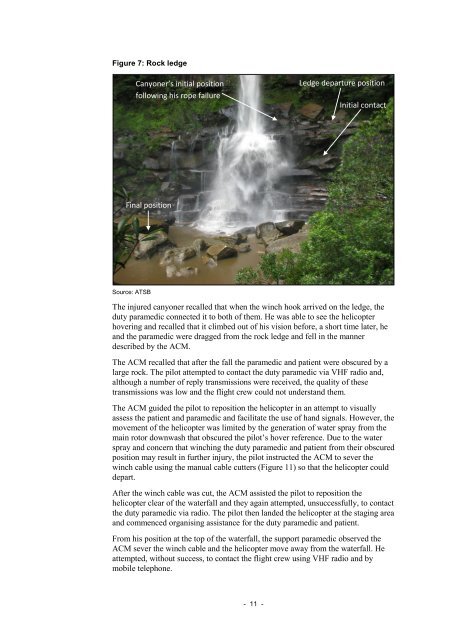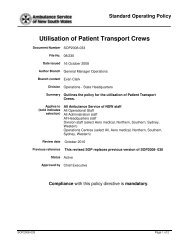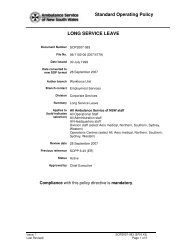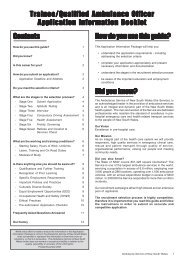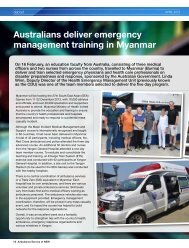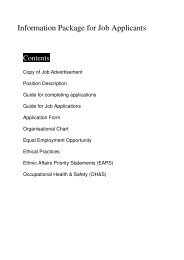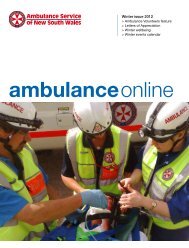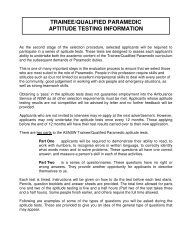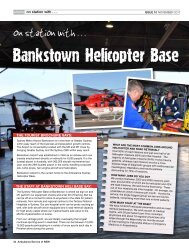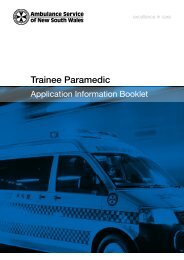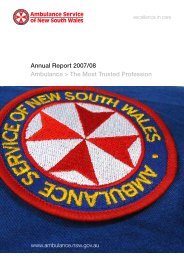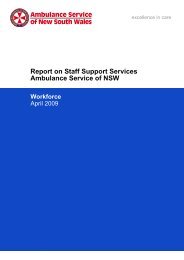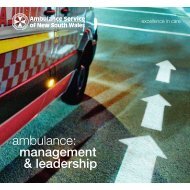atsb final report released 16 may 2013 - Ambulance Service of NSW
atsb final report released 16 may 2013 - Ambulance Service of NSW
atsb final report released 16 may 2013 - Ambulance Service of NSW
Create successful ePaper yourself
Turn your PDF publications into a flip-book with our unique Google optimized e-Paper software.
Figure 7: Rock ledgeCanyoner’s initial positionfollowing his rope failureLedge departure positionInitial contactFinal positionSource: ATSBThe injured canyoner recalled that when the winch hook arrived on the ledge, theduty paramedic connected it to both <strong>of</strong> them. He was able to see the helicopterhovering and recalled that it climbed out <strong>of</strong> his vision before, a short time later, heand the paramedic were dragged from the rock ledge and fell in the mannerdescribed by the ACM.The ACM recalled that after the fall the paramedic and patient were obscured by alarge rock. The pilot attempted to contact the duty paramedic via VHF radio and,although a number <strong>of</strong> reply transmissions were received, the quality <strong>of</strong> thesetransmissions was low and the flight crew could not understand them.The ACM guided the pilot to reposition the helicopter in an attempt to visuallyassess the patient and paramedic and facilitate the use <strong>of</strong> hand signals. However, themovement <strong>of</strong> the helicopter was limited by the generation <strong>of</strong> water spray from themain rotor downwash that obscured the pilot’s hover reference. Due to the waterspray and concern that winching the duty paramedic and patient from their obscuredposition <strong>may</strong> result in further injury, the pilot instructed the ACM to sever thewinch cable using the manual cable cutters (Figure 11) so that the helicopter coulddepart.After the winch cable was cut, the ACM assisted the pilot to reposition thehelicopter clear <strong>of</strong> the waterfall and they again attempted, unsuccessfully, to contactthe duty paramedic via radio. The pilot then landed the helicopter at the staging areaand commenced organising assistance for the duty paramedic and patient.From his position at the top <strong>of</strong> the waterfall, the support paramedic observed theACM sever the winch cable and the helicopter move away from the waterfall. Heattempted, without success, to contact the flight crew using VHF radio and bymobile telephone.- 11 -


